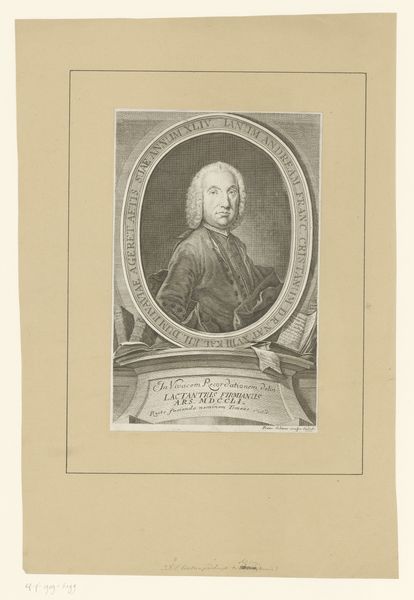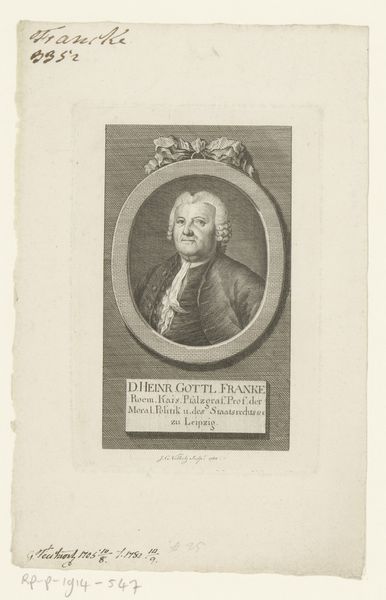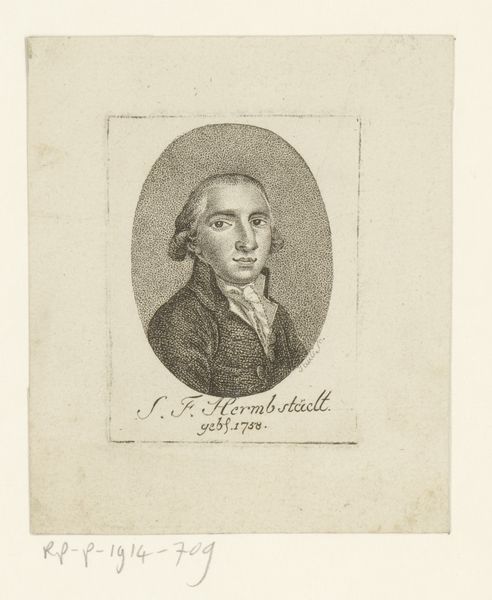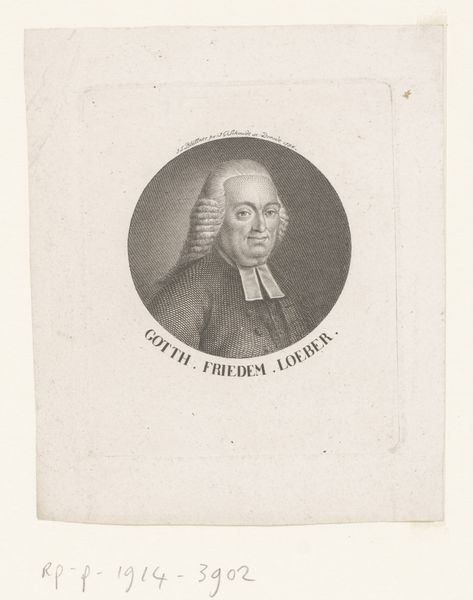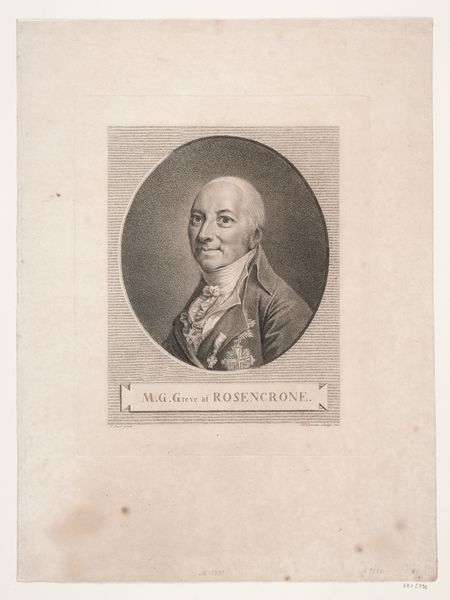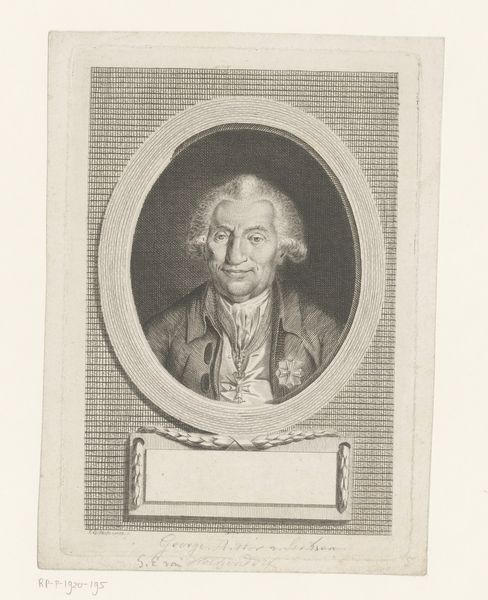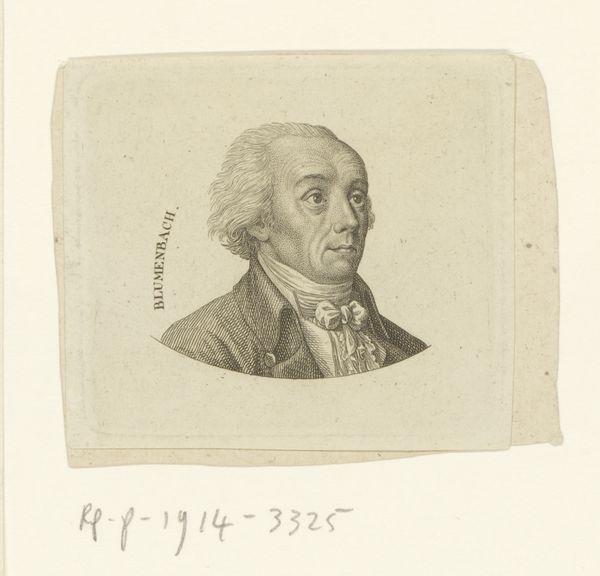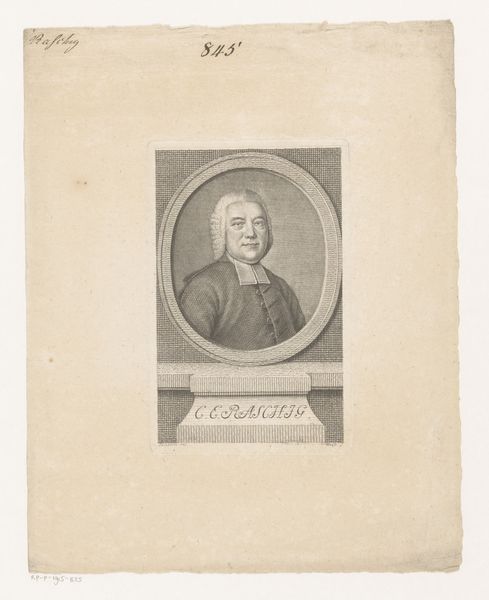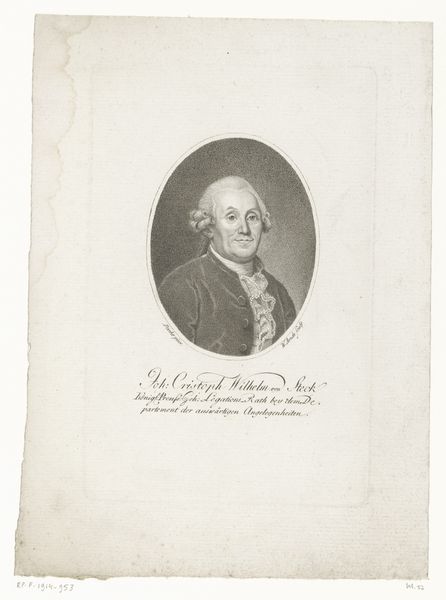
Dimensions: height 75 mm, width 72 mm
Copyright: Rijks Museum: Open Domain
Curator: I'm immediately drawn to the gentleman's calm, almost knowing gaze. There's a peaceful quality, isn't there? Like he holds a secret just beyond our reach. Editor: This engraving, titled "Portret van Heinrich Philipp Conrad Henke," was created by Georg Christoph Schmidt sometime between 1750 and 1811. What intrigues me is how a single printed image can carry so much historical weight. It's a snapshot of a man, but also of an era. Curator: Absolutely. The formal pose, the powdered wig, even the very specific way the lines are etched give us so much about the period’s taste for elegance and order. It’s like a captured moment carefully constructed. I wonder who Henke was? He seems important. Editor: Henke was a prominent theologian, a professor whose work had considerable impact on religious thought of the late 18th century. The portrait, like many commissioned engravings, served a very specific purpose: to disseminate his image, and by extension, his authority and ideas, to a wider audience. Curator: So it’s like a Baroque era profile pic, almost? The perfect lighting, just the right angle. It's fascinating to see the deliberate construction of public image playing out even back then, or I suppose especially then! And the detail achieved just with lines is incredible! It does lend itself to easy dissemination, now that I think about it. Editor: Precisely! Engravings democratized image production to some degree. This print could have been sold, reproduced in books, and circulated far more widely than an oil painting, extending Henke's reach and solidifying his place in intellectual history. Curator: That almost feels modern, doesn't it? The desire to spread ideas through image. It makes me see a direct line to posters, magazine covers, the internet! So the goal of controlling your public persona never changes, just the methods do. Makes me feel connected to the subject through the ages in some ways. Editor: It's a reminder that art often operates within specific social and political contexts, serving particular agendas. Thinking about those power dynamics enriches our understanding and sharpens our view of the image itself, I would add. Curator: Absolutely, thank you for that illuminating history! It really opened my eyes to the intention that can shape the image so long after the piece’s inception. Editor: Indeed. It's been enriching to re-examine this portrait through your personal lens, shedding light on why visual culture matters.
Comments
No comments
Be the first to comment and join the conversation on the ultimate creative platform.


